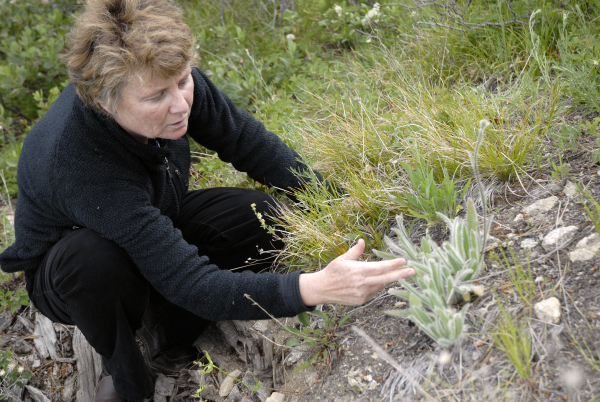Introduction
Welcome to the Biomimicry Toolbox, your guide to applying nature’s lessons to design challenges.
Let’s begin our introduction to the practice of biomimicry by defining what it is, why it is important and how biomimicry differs from other fields that sound similar.
What is Biomimicry?
Biomimicry is the practice of applying lessons from nature to the invention of healthier, more sustainable technologies for people.
Biomimicry is the practice of applying lessons from nature to the invention of healthier, more sustainable technologies for people. Biomimetic designers (“biomimics”) focus on understanding, learning from, and emulating the strategies used by living things, with the intention of creating designs and technologies that are sustainable.
Janine Benyus, co-founder of the Biomimicry Institute, biologist, and author of Biomimicry: Innovation Inspired by Nature (the book that brought biomimicry into the public eye), has defined biomimicry as the “conscious emulation of life’s genius.” That is:
- “Conscious”: being intentional
- “Emulation”: learning from living things, then applying those insights to the challenges humans want to solve.
- “Life’s genius”: recognizing that life has arrived at well-adapted solutions that have stood the test of time, within the constraints of a planet with finite resources.
With biomimicry, we can develop new products, processes, and systems, or improve existing designs. It can help us to shift our perspective, see design problems and objectives differently, and uncover “new” solutions to difficult problems.
Biomimicry, bio-inspired design, and other “bio-” terms
As you begin to explore biomimicry, you’ll no doubt come across a host of other “bio-” terms, such as: bio-inspired, biophilia, biomimetics, bioengineering, bionics, bio-utilization…. What do these terms mean? How are they similar to or different from each other?
Not everyone agrees on the definitions, but “bio-inspired” is generally accepted as an umbrella term for design approaches, biomimicry included, that use biology as a resource for solutions. (See the Glossary for our definitions of these terms.) Biomimicry is unique among other bio-inspired design approaches in its emphasis on learning from the capacity of living systems to arrive at sustainable solutions to specific functional challenges. The articles below offer perspectives from two biomimicry practitioners on the value of biomimicry and what differentiates it from other types of bio-inspired design.
Bio-Inspired Buzzwords: Biomimicry and Biomimetics
by Denise DeLuca for Biomimicry for Creative Innovation
Biomimicry, Bioutilization, Biomorphism: The Opportunities of Bioinspired Design
by Allison Bernett for Terrapin Bright Green
Why We Need Biomimicry
Our planet is old – 4.5 billion years old. And for an astounding 3.8 billion years, it has harbored life. Since that time, millions of organisms have adapted and evolved to meet their needs within the limits of the planet, creating an intricately interconnected living system in the process.
Please enable cookies to view this embedded content!
This functionality/content marked as “Google Youtube” uses cookies that you chose to keep disabled. In order to view this content or use this functionality, please enable cookies: click here to open your cookie preferences.
How long has life been on Earth? This video makes it easier to comprehend the vast time scales of evolution and the pace at which life evolved by compressing 4.5 billion years into one 24 hour day.
Humans are a product of that living system, too, but we are relative newcomers. In the short period we’ve been on Earth (approx 200,000 years), we’ve developed some rather destructive habits, too. In fact, we’ve transformed the earth so much physically, chemically, and ecologically that some scientists argue we’ve ushered in a new geologic epoch: the Anthropocene. We’ve tinkered with Earth’s systems in significant ways, and only in recent decades have we truly begun to understand the consequences of our actions.
But perhaps the biggest mistake we’ve made is forgetting that we are part of, not separate from, the ecosystems of our planet. We depend on them to provide essentials like clean air, water, and food. And in turn, the rest of life on Earth depends on us to be mindful of the limits of planetary resources.
Biomimicry Film
Watch this 20-minute film featuring Janine Benyus introducing biomimicry and explaining how mimicking nature can solve some of our most pressing problems.
Biomimicry offers a chance to make things right — to embrace a systems view of our world and begin living within planetary limits. Biomimicry recognizes that we are surrounded by millions of organisms and ecosystems that have something to teach us about surviving and thriving on Earth. They face many of the same challenges that we do—they need to stay warm, filter water, obtain energy, and so on—all while conserving precious resources and without harming their own environments.
With care and focus, we can learn to emulate nature’s successful strategies. Now is the time to begin creating designs, materials, and technologies of our own that are not only sustainable, but also regenerative and restorative—supporting the fabric of life on Earth.
In the practice of biomimicry, we set our sights on an audacious goal: to build a more life-friendly world–one in which human technologies meet the same ‘design constraints’ that the rest of life on Earth works within. Of course, we can’t create that perfect world overnight. But when we pay close attention to how nature works, and learn how we can emulate its genius in ways that enhance, rather than detract from, our planet, we can take steps toward significant change. Over time, all of those steps can add up to a system shift, a better way to fit into our world. This Toolbox will help you get started on that journey.
Where to next?
As you begin your learning journey, we suggest exploring the Core Concepts of biomimicry in the next section of the Toolbox.
Photo Credits
Janine Benyus: (C) Biomimicry Institute






